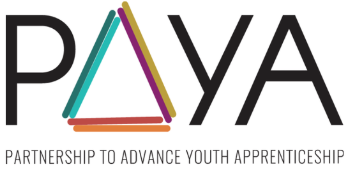 By integrating classroom instruction and hands-on learning, both youth apprenticeships and Career Technical Education (CTE) can enhance a learner’s educational experience and better prepare them for future career success. Putting Learner Success First: A Shared Vision for the Future of CTE underscores the significance of coordinating high-quality youth apprenticeships and CTE, empowering learners through work-based learning and strong systems alignment anchored in learner success. Rather than isolating CTE as a separate educational strategy, an integrated approach to education and training can ensure that all learners have opportunities to succeed in a career of their choosing.
By integrating classroom instruction and hands-on learning, both youth apprenticeships and Career Technical Education (CTE) can enhance a learner’s educational experience and better prepare them for future career success. Putting Learner Success First: A Shared Vision for the Future of CTE underscores the significance of coordinating high-quality youth apprenticeships and CTE, empowering learners through work-based learning and strong systems alignment anchored in learner success. Rather than isolating CTE as a separate educational strategy, an integrated approach to education and training can ensure that all learners have opportunities to succeed in a career of their choosing.
Advance CTE recently expanded our commitment to youth apprenticeship programs by joining the Partnership to Advance Youth Apprenticeship Initiative (PAYA). CTE can and should have a clear role in helping to achieve all five of the PAYA principles for high quality youth apprenticeships. In particular, the “Career-Oriented” PAYA principle that “learning is structured around knowledge, skills, and competencies that lead to careers with family-supporting wages” is supported by bringing together apprenticeship and CTE programs.
High-quality youth apprenticeships share the same core elements as CTE programs of study. For example, Advance CTE’s Policy Benchmark Tool identifies rigorous course standards and progressive, sequenced courses; secondary and postsecondary alignment and early postsecondary offerings; industry involvement; labor market demand; and high-quality instruction and experiential learning as necessary for a program to be considered high quality – all of which are reflected across the PAYA principles.
What This Looks Like in Practice
The Tech Ready Apprentices for Careers in Kentucky (TRACK) program showcases the opportunities that become available to students when instructional alignment and programmatic articulation are coordinated between CTE and youth apprenticeships. TRACK is a statewide program, overseen by the Kentucky Labor Cabinet and Department of Education’s Office of Career and Technical Education, that supports secondary students participating in registered youth apprenticeships. Employers and educators work together through TRACK to create youth pre-apprenticeships that match registered apprenticeships, as well as select a four-course CTE sequence and a coordinated industry certification.
TRACK first launched with a manufacturing pilot in thirteen high schools during the 2013 – 2014 school year. Since then the program has been scaled to include other schools and additional skilled trades. The program utilizes Kentucky’s existing CTE infrastructure to create a pipeline for students that begins in high school and culminates in an industry-recognized credential, paid work experience and, in many cases, advanced standing within a full Registered Apprenticeship.
Another example is the Apprenticeship Maryland Program (AMP), created as a new CTE program of study through a partnership with the Maryland State Department of Education and Department of Labor and Licensing Regulation. AMP students are able to participate in paid work based learning, enroll in applicable academic courses and spend time with a mentor from a relevant industry. One of the intentions of AMP is for students to understand the direct connection between their educational experience and the state’s workforce demands. Participants benefit from the chance to “earn and learn” with local businesses, while also getting credit toward high school graduation and earning a credential- underscoring the importance of combining academics and workforce skills.
Over the past two years, AMP was rolled out on a trial basis in two county public school systems. These pilot programs were so successful that AMP is now scaled in additional districts across the state. To create strong AMP sites, the state works with local businesses in addition to the local school system in order to provide students with a directly applicable learning experience.
For more examples of best practices, as well as common challenges, in linking CTE and apprenticeships, check out a report from Advance CTE in partnership with JFF, Vivayic and RTI International on Opportunities for Connecting Secondary CTE Students and Apprenticeships. This report was developed through a contract with the Office of Career, Technical, and Adult Education, at the U.S. Department of Education.
Meredith Hills, Policy Associate
Tags: apprenticeship, PAYA, youth apprenticeship

